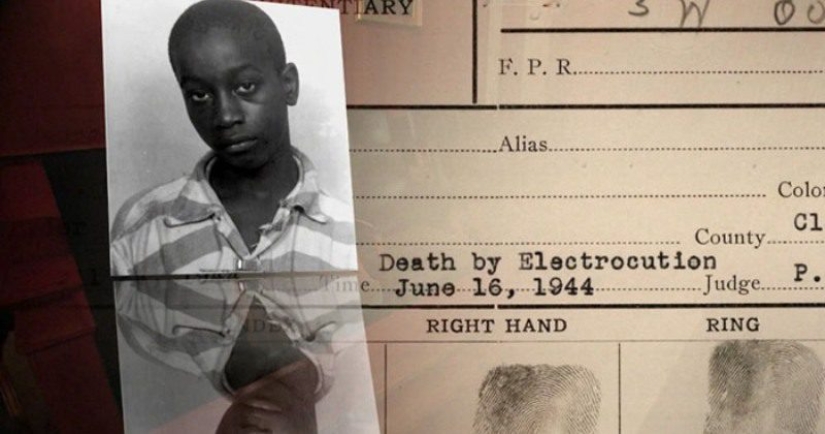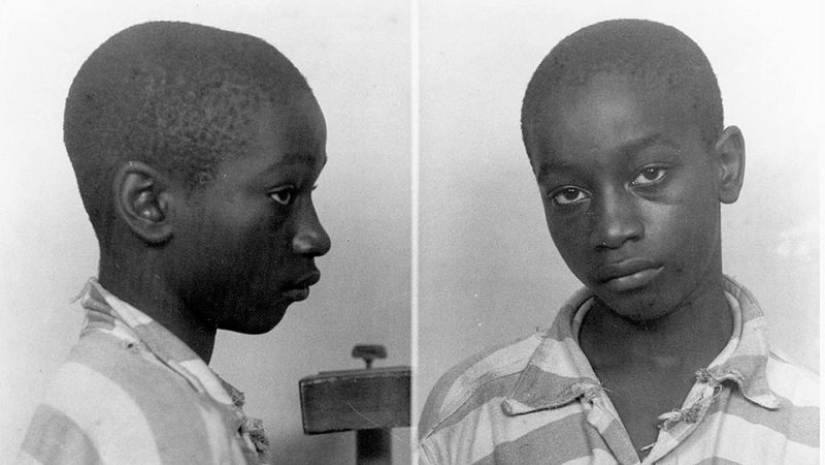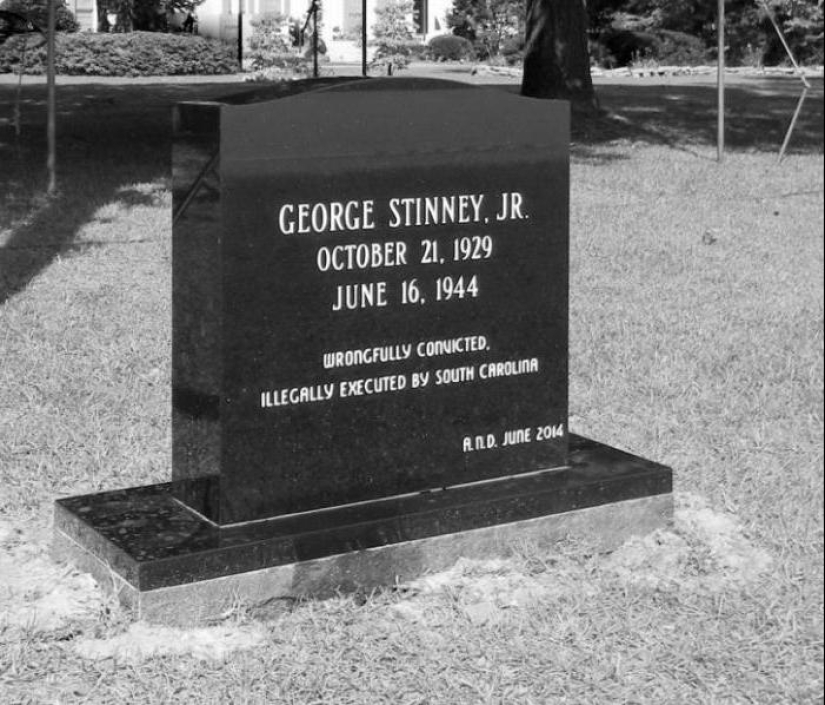The story of 14-year-old George Stinney, who was executed by mistake
Categories: History | North America | Society | World
By Pictolic https://pictolic.com/article/the-story-of-14-year-old-george-stinney-who-was-executed-by-mistake.htmlThe history of world justice is full of annoying mistakes. Unfortunately, the price of these misunderstandings is usually very high — the fate of a person or even his life. George Stinney, a 14-year-old black teenager, was electrocuted on June 16, 1944, for a crime he did not commit. He became the youngest suicide bomber in the history of the United States and left an indelible stain on the judicial system of the most democratic country in the world.

George Stinney was arrested in 1944, charged with the rape and murder of two girls — 8-year-old Mary Emma Thames and 11-year-old Betty June Binnicker. The bodies of the children were found in a mud-filled ditch in a vacant lot near a church in Alcolu, South Carolina. An autopsy revealed that Mary and Betty were beaten to death after being abused.
At that time, Alkolu was divided into "white" and "black" districts by the railway. Traditionally, the part inhabited by black citizens was less prosperous — unemployment, poverty and crime reigned there. The girls were killed in an area populated by African Americans — they came there on bicycles to pick wildflowers.

The only reason for the arrest of young George Stinney was that several witnesses in their testimony reported that they saw the boy talking to his girlfriends on the side of the road. At the same time, George had an alibi confirming that he could not have been at the crime scene at the time of its commission, but it was not taken into account.
The trial of the juvenile offender lasted only three hours. A tax commissioner working in a state structure acted as a lawyer, and a local resident who discovered the bodies and doctors who examined the corpses at the crime scene were present as witnesses. The police who detained the boy claimed that George confessed to the murder at the time of his arrest. However, this fact, for some reason, was not documented in any way and the cops took their word for it.
As it should be in a fair American court, the decision was made by a jury, among which, by the way, there was not a single black man. They quickly agreed with the prosecutor, signing the death sentence of the child, and hurried about their business, immediately throwing this small unpleasant episode of their life out of their heads.

Two months later, on June 16, 1944, George Stinney was executed in the electric chair, in the presence of the commission and the relatives of the dead girls. The court archives preserved the execution protocols, which stated that the teenager was too small for the instrument of execution. It was impossible to fasten the straps on his wrists and ankles, and therefore they were tied in knots.
There were other technical difficulties that had to be solved locally, just before the execution. In particular, in order to ensure a proper seat on the chair, it was necessary to put a Bible, which Stinny did not part with in prison and which he took with him to the place of execution.
On December 17, 2014, 70 years after George's death, District Court judge Carmen Mullen overturned the teenager's death sentence, which had already been carried out, citing a number of procedural violations. The impetus for this was the actions of the lawyer of the Stinney family Ray Chandler and local public figures Burgess and Mackenzie. On October 25, 2013, these people filed a motion for reconsideration of the case, claiming that they have irrefutable evidence of George's innocence.
In court, Chandler presented the testimony of Stinney's relatives to the court, who claimed that the teenager was with them at the time of the murder. The story of Wilford "Johnny" Hunter, who shared a prison cell with Stinney in 1944, was also published. He told that the boy confessed to him that he was forced to take the blame on himself, while he claimed that he was absolutely innocent.
It should be noted that although the verdict was overturned, no one acquitted George. Judge Mullen summed it up at the end of the hearing, saying that maybe George did commit this double murder after all. The meeting was attended by family members of the victims — Betty Binnicker and Mary Thames, who were disappointed with the formal cancellation of the verdict. They claimed that they did not doubt the guilt of the dark-skinned teenager for a second and even conducted their own investigation to calm their conscience.

The terrible story of the execution of a teenager formed the basis of the book by American journalist David Stout "Skeletons of Carolina". The book was published in 1988, long before the retrial of the Stinney case. In 1991, the film adaptation of the novel, starring young actor Kenny Blank, was released. The boy played so convincingly that he was awarded for his work as the best aspiring actor.
Recent articles

Treasures are all associated with pirates, robbers and the affairs of bygone days. You will be surprised, but countless treasures ...

Professional street photographer Eric Kim teaches his craft in workshops around the world. Next, you will find some tips from a ...

An Englishman, a German and a Russian meet... No, this is not the beginning of another joke, but a rough description of a video ...